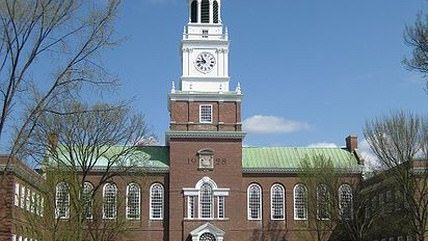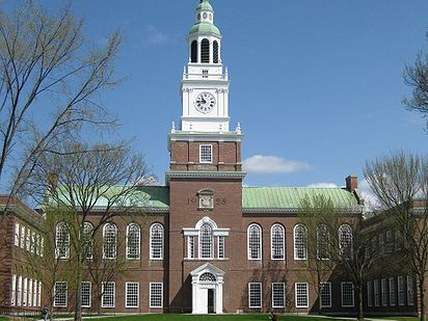Expect Soaring College Costs From the President's Price-Subsidizing Student Loan Scheme
Students who resist the temptation of "help" with college costs will be in a much better position when the higher education bubble bursts.


When I was a college freshman in 1983, average tuition, fees, room and board at private, nonprofit colleges added up to $18,143 in 2013 dollars. This year, that number has risen to $40,917. Public colleges are cheaper than their private counterparts, but they've seen similar soaring costs. You can expect more of the same as President Obama commits the federal government to further subsidize student borrowing, thereby encouraging colleges to hike prices to match.
"Average published tuition and fees at public four-year colleges and universities increased by 19% beyond the rate of inflation over the five years from 2003-04 to 2008-09, and by another 27% between 2008-09 and 2013-14," according to the College Board. "The 14% real increase in average published tuition and fees at private nonprofit four-year institutions from 2008?09 to 2013?14 was larger than the 9% increase over the previous five years."
President Obama proposes to make it easier for students to handle these costs by "taking steps to make student loan debt more affordable and manageable to repay," boasts the White House. To that end, he's ordered the Department of Education to expand the Pay as You Earn program that caps payments of student loans at 10 percent of borrowers' incomes. The program also forgives the balance after 20 years of payments (10 years in "public service" jobs).
The federal government also offers the Income Based Repayment program which caps repayments at 15 percent of income and forgives outstanding debt after 25 years.
In fact, the federal government completely dominates student lending, with student loans guaranteed or held by the federal government exceeding $1 trillion as of last year, as opposed to an estimated $165 billion in private loans, according to the administration's own Consumer Financial Protection Bureau. Federal student loans grew by 20 percent between May 2011 and May 2013, while revolving credit—mostly credit card debt—grew by less than 2 percent during the same period.
That's a lot of debt, and growing fast. So what's wrong with the federal government making it easier for students to handle the burden of paying for college?
Here's the thing: All of that debt assistance is chasing its own tail. It drives up the price of college, which increases the demand for student loans to pay the tab, which then inspires calls for "steps to make student loan debt more affordable and manageable…"
"The basic problem is simple," wrote the Cato Institute's Neal McCluskey at U.S. News & World Report. " Give everyone $100 to pay for higher education and colleges will raise their prices by $100, negating the value of the aid."
It's a spiraling cycle that ends only when the realization sets in that people are paying way too much for something that can never justify the money it has soaked up.
"Subsidies raise prices, leading to higher subsidies, which raise prices even more," wrote Veronique de Rugy of the Mercatus Center. "Yet this higher education bubble, like the housing bubble, will eventually pop. Meanwhile, large numbers of students will graduate with more debt than they would have in an unsubsidized market."
McCluskey and de Rugy both made their cases before the latest round of student loan "relief." The president's recent move can only encourage colleges to further hike prices, inflating the bubble even more.
But if government officials are making the problem worse, the general public may be wising up.
"Given how expensive it is to go to college, there has to be a return sufficient to make it worth the time and especially the money," Instapundit and University of Tennessee law professor Glenn Reynolds told Reason TV. "You're seeing declining enrollment in some schools and you're seeing much more price resistance on the part of both parents and students."
That makes sense, since the Bureau of Labor Statistics continues to project that, through 2020, "occupations that typically need a high school diploma or less will continue to represent more than half of all jobs," even as bachelor's degrees become increasingly pricey.
Students who resist the temptation of the president's "help" with college costs will be in a much better position than their peers when the higher education bubble finally bursts.


Show Comments (47)